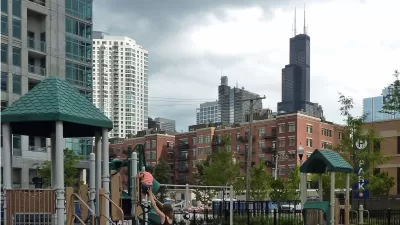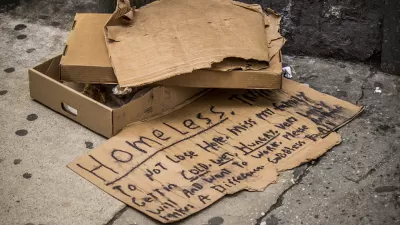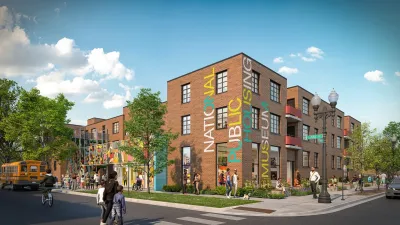A new report from the Urban Institute and the Metropolitan Planning Council looks at ways to fight perpetual segregation as Chicago's affluent white population booms.

In a trend that Tanvi Misra characterizes as "white flight, in reverse," estimates indicate that by 2030, "[Chicago's] white population will increase by 14 percent, and rich households making over $125,000 will grow by a striking 42 percent." Meanwhile, the black population will decline by 17 percent while lower-income Latinos move into surrounding suburbs.
To combat this reshuffled pattern of residential segregation, the report "offers specific policies to increase opportunity and options for residents living in historically disinvested neighborhoods, minimize the racial wealth gap, combat systemic racism, and improve health and safety. Improving access to affordable housing, according to the report, is a crucial step that helps achieve all these outcomes."
The report's recommendation to decrease local control over affordable housing proposals has provoked the strongest reactions so far, Misra says. Other recommendations include 10-year tax incentives for property owners who implement more affordable units and an expansion of the city's housing voucher program.
FULL STORY: What Will It Take to Desegregate Chicago?

Alabama: Trump Terminates Settlements for Black Communities Harmed By Raw Sewage
Trump deemed the landmark civil rights agreement “illegal DEI and environmental justice policy.”

Planetizen Federal Action Tracker
A weekly monitor of how Trump’s orders and actions are impacting planners and planning in America.

The 120 Year Old Tiny Home Villages That Sheltered San Francisco’s Earthquake Refugees
More than a century ago, San Francisco mobilized to house thousands of residents displaced by the 1906 earthquake. Could their strategy offer a model for the present?

In Both Crashes and Crime, Public Transportation is Far Safer than Driving
Contrary to popular assumptions, public transportation has far lower crash and crime rates than automobile travel. For safer communities, improve and encourage transit travel.

Report: Zoning Reforms Should Complement Nashville’s Ambitious Transit Plan
Without reform, restrictive zoning codes will limit the impact of the city’s planned transit expansion and could exclude some of the residents who depend on transit the most.

Judge Orders Release of Frozen IRA, IIJA Funding
The decision is a victory for environmental groups who charged that freezing funds for critical infrastructure and disaster response programs caused “real and irreparable harm” to communities.
Urban Design for Planners 1: Software Tools
This six-course series explores essential urban design concepts using open source software and equips planners with the tools they need to participate fully in the urban design process.
Planning for Universal Design
Learn the tools for implementing Universal Design in planning regulations.
Clanton & Associates, Inc.
Jessamine County Fiscal Court
Institute for Housing and Urban Development Studies (IHS)
City of Grandview
Harvard GSD Executive Education
Toledo-Lucas County Plan Commissions
Salt Lake City
NYU Wagner Graduate School of Public Service





























